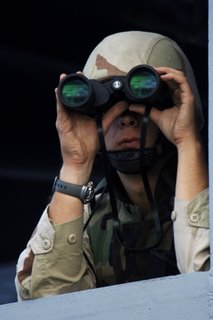Lessons From Cold War Insurgencies Could Aid Efforts In Iraq, Afghanistan

Tactics used to battle Cold War-era insurgencies – such as offering amnesty to combatants and securing national borders – could help the United States as it confronts insurgents in Iraq and Afghanistan, according to a new RAND Corporation report.
While the insurgency in Iraq often is seen as too fragmented to be compared with past events, a review of five decades of RAND research on non-traditional warfare suggests that the current struggle in Iraq is similar in many ways to past insurgencies faced by the United States and other nations.
“The differences between past and current fights against insurgencies are overstated,” says Austin Long, author of the new RAND report. “Many insurgencies during the Cold War were fragmented, with rebel groups fighting each other as well as a central opposition force.”
Long says his review of five decades of counterinsurgency research by RAND suggests there are four lessons of particular relevance to today's ongoing battles: the proper organization of counterinsurgency efforts; the use of amnesty and reward programs; the control of national borders; and pacification of a nation's population.
Long, a doctoral candidate in securities studies at the Massachusetts Institute of Technology, reviewed dozens of past RAND studies about tactics used against insurgencies in such disparate places as Vietnam, Algiers and El Salvador in order to distill lessons for today's conflicts.
His efforts included working to declassify several reports so that their lessons could be incorporated into his report, which is titled On ‘Other War' – Lessons from Five Decades of RAND Counterinsurgency Research. RAND is a nonprofit research organization.
Long said that past experience shows that measuring progress against insurgents is difficult because the traditional military indicators such as movement of the front line or the number of enemy killed may be misleading. However, there are a number of best-practices in counterinsurgency operations that hold promise for the current efforts in Iraq and Afghanistan.
Long concludes that the best organization to combat insurgencies appears to bring together political and military components into one decision-making group, which insures that the efforts of one does not undercut the progress of the other.
Some movement toward this model has occurred in both Iraq and Afghanistan with efforts called Provincial Reconstruction Teams, which include representatives from the military, the U.S. State Department, development experts and local officials. The teams work together to move forward the dual goals of improving security and developing government resources.
Long suggests these teams be expanded to create similar efforts at the regional and national levels, where they could coordinate overall efforts for counterinsurgency operations and development, as well as settling disagreements that occur at the local level.
“This type of organization helps wean military officials from thinking in terms of divisions and brigades when it comes to counterinsurgency efforts,” Long said.
Another strategy outlined in Other War involves extending amnesty to those involved in an insurgency, as well as offering rewards to people who turn in those who are involved in insurgent fighting.
Long argues that in Iraq amnesty should be offered even to insurgents who have been involved in killings, but only if the combatants agree to fully cooperate with the government and relocate away from insurgent-dominated areas.
Experiences in fighting insurgencies in places such as Malaya and Vietnam show that amnesty programs can encourage thousands of fighters to give up their arms by providing an alternative to the “fight to the finish” mindset that characterizes insurgent battles, according to the report.
Labels: Army, civil war, cold war, insurgency, insurgent, Iraq, Rand, troops, war


0 Comments:
Post a Comment
Subscribe to Post Comments [Atom]
<< Home